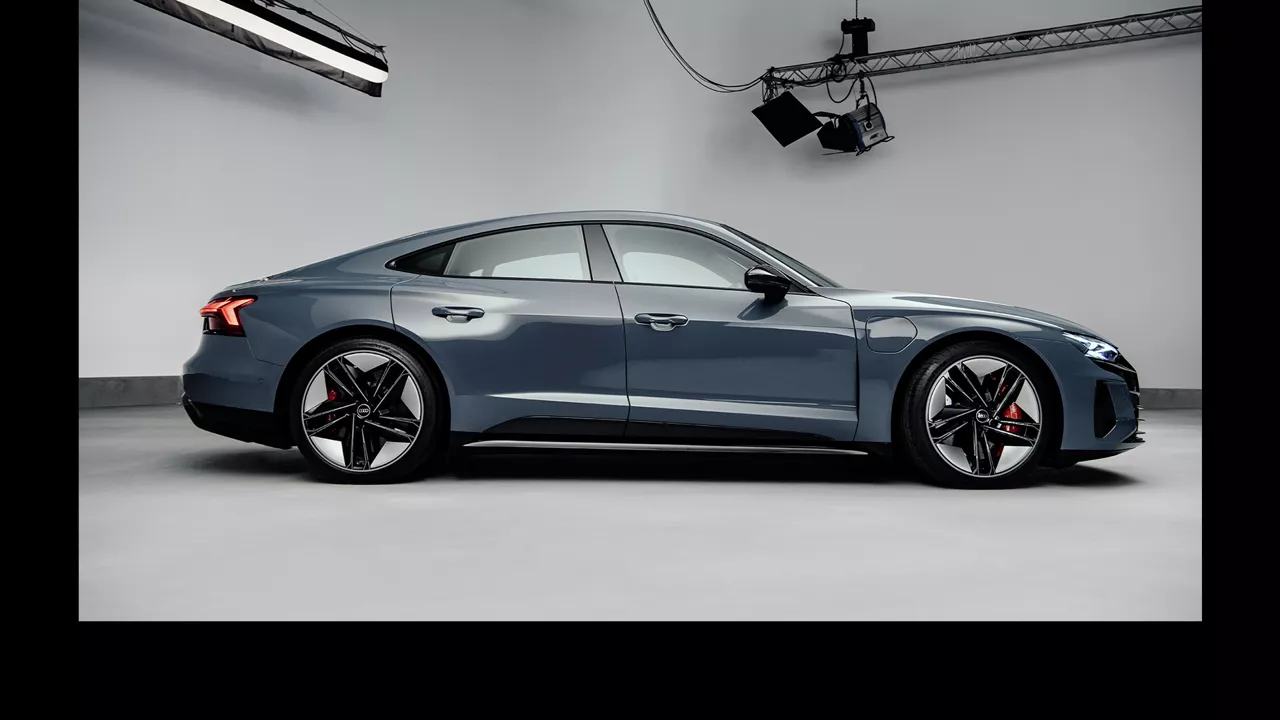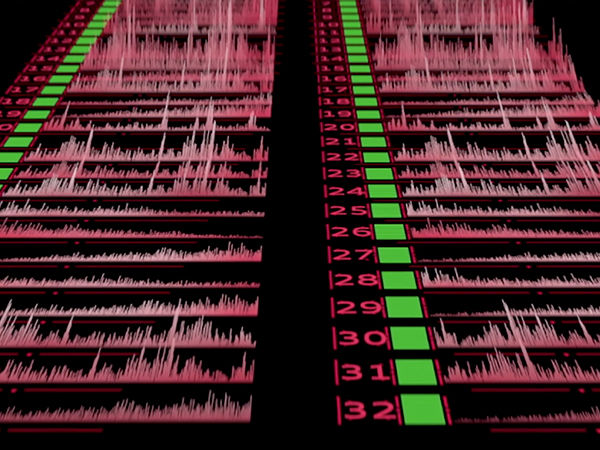Detective work in the wind tunnel
In the Audi aeroacoustic wind tunnel, aerodynamics specialists are perfecting the shape of the Audi RS e-tron GT.
missing translation: fa.article-intro.reading-time – Copy: Bernd Zerelles − Photo: Robert Fischer − Film: graupause – 05/06/2023

In the Audi aeroacoustic wind tunnel a wind speed up to 300 km/h can be generated. Only when the airflow interacts accurately with the vehicle accurate measurements can be obtained.
In the Audi aeroacoustic wind tunnel a wind speed up to 300 km/h can be generated. Only when the airflow interacts accurately with the vehicle accurate measurements can be obtained.

Specially designed turning vanes distribute the air evenly around the corners in the wind tunnel.

Thomas Redenbach is Head of Development Aerodynamics & Aeroacoustics – Vehicle Projects at Audi.
Specially designed turning vanes distribute the air evenly around the corners in the wind tunnel.
Thomas Redenbach is Head of Development Aerodynamics & Aeroacoustics – Vehicle Projects at Audi.

European model shown. Specifications may vary.
European model shown. Specifications may vary.

Dr. Kentaro Zens, the aerodynamicist responsible for the Audi RS e-tron GT, standing next to the highly aerodynamic underbody of the sports car.

Dr. Kentaro Zens and Thomas Redenbach discuss the measurement readings. Behind the panel, the Audi RS e-tron GT * stands in what is known as the plenum of the wind tunnel.
Dr. Kentaro Zens, the aerodynamicist responsible for the Audi RS e-tron GT, standing next to the highly aerodynamic underbody of the sports car.
Dr. Kentaro Zens and Thomas Redenbach discuss the measurement readings. Behind the panel, the Audi RS e-tron GT * stands in what is known as the plenum of the wind tunnel.
“Every thousandth by which we can improve the drag coefficient leverages potential in terms of range”
Dr. Moni Islam

Dr. Moni Islam is Head of Development Aerodynamics & Aeroacoustics at Audi. Here, he explains how the active silencer of the wind tunnel works.
Dr. Moni Islam is Head of Development Aerodynamics & Aeroacoustics at Audi. Here, he explains how the active silencer of the wind tunnel works.

The smoke shows how the airflow behaves after passing the exterior mirror of the Audi RS e-tron GT.
European model shown. Specifications may vary.

The aerodynamicists can access the most important vehicle and wind tunnel data at their workstation at all times.
The smoke shows how the airflow behaves after passing the exterior mirror of the Audi RS e-tron GT.
European model shown. Specifications may vary.
The aerodynamicists can access the most important vehicle and wind tunnel data at their workstation at all times.
“We invest an enormous amount of time in the last 20 percent of the aerodynamics”
Thomas Redenbach

The vehicle can be raised on the scale to enable analyses and modifications during work in the wind tunnel.
European model shown. Specifications may vary.

Unremarkable, but effective: A plastic lip on the underbody directs the airflow highly efficiently.
The vehicle can be raised on the scale to enable analyses and modifications during work in the wind tunnel.
European model shown. Specifications may vary.
Unremarkable, but effective: A plastic lip on the underbody directs the airflow highly efficiently.

A smoke lance can be used to make the airflow visible. Here, it shows the optimum path of the flow through the air curtain to the wheel arch.
European model shown. Specifications may vary.
A smoke lance can be used to make the airflow visible. Here, it shows the optimum path of the flow through the air curtain to the wheel arch.
European model shown. Specifications may vary.
“The aim of aerodynamics is to facilitate design.”
Dr. Kentaro Zens

The rear spoiler of the Audi RS e-tron GT can be moved into three different positions to ensure effective airflow control under all driving conditions.
European model shown. Specifications may vary.

The rotor turbine in the wind tunnel has a power output of up to 2,720 kW.
The rear spoiler of the Audi RS e-tron GT can be moved into three different positions to ensure effective airflow control under all driving conditions.
European model shown. Specifications may vary.
The rotor turbine in the wind tunnel has a power output of up to 2,720 kW.



